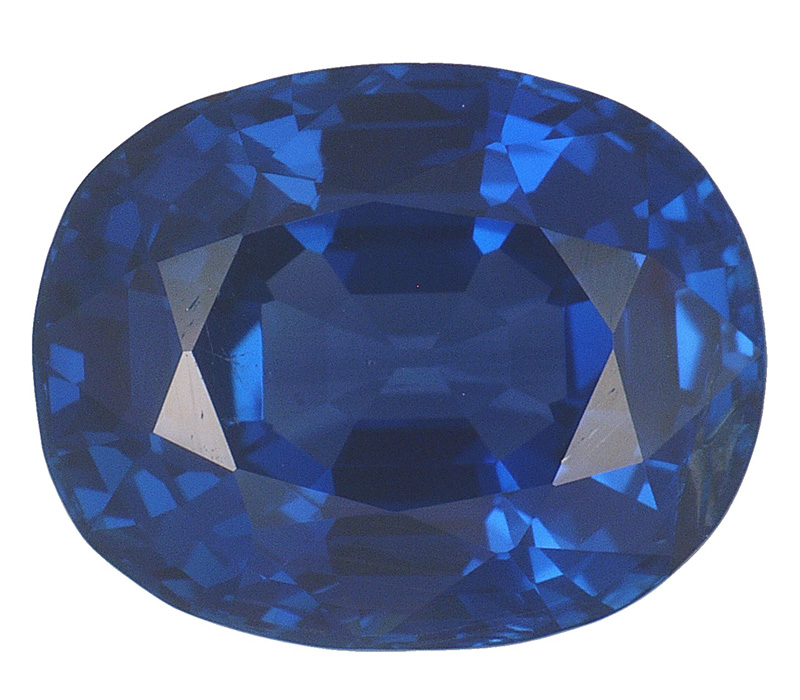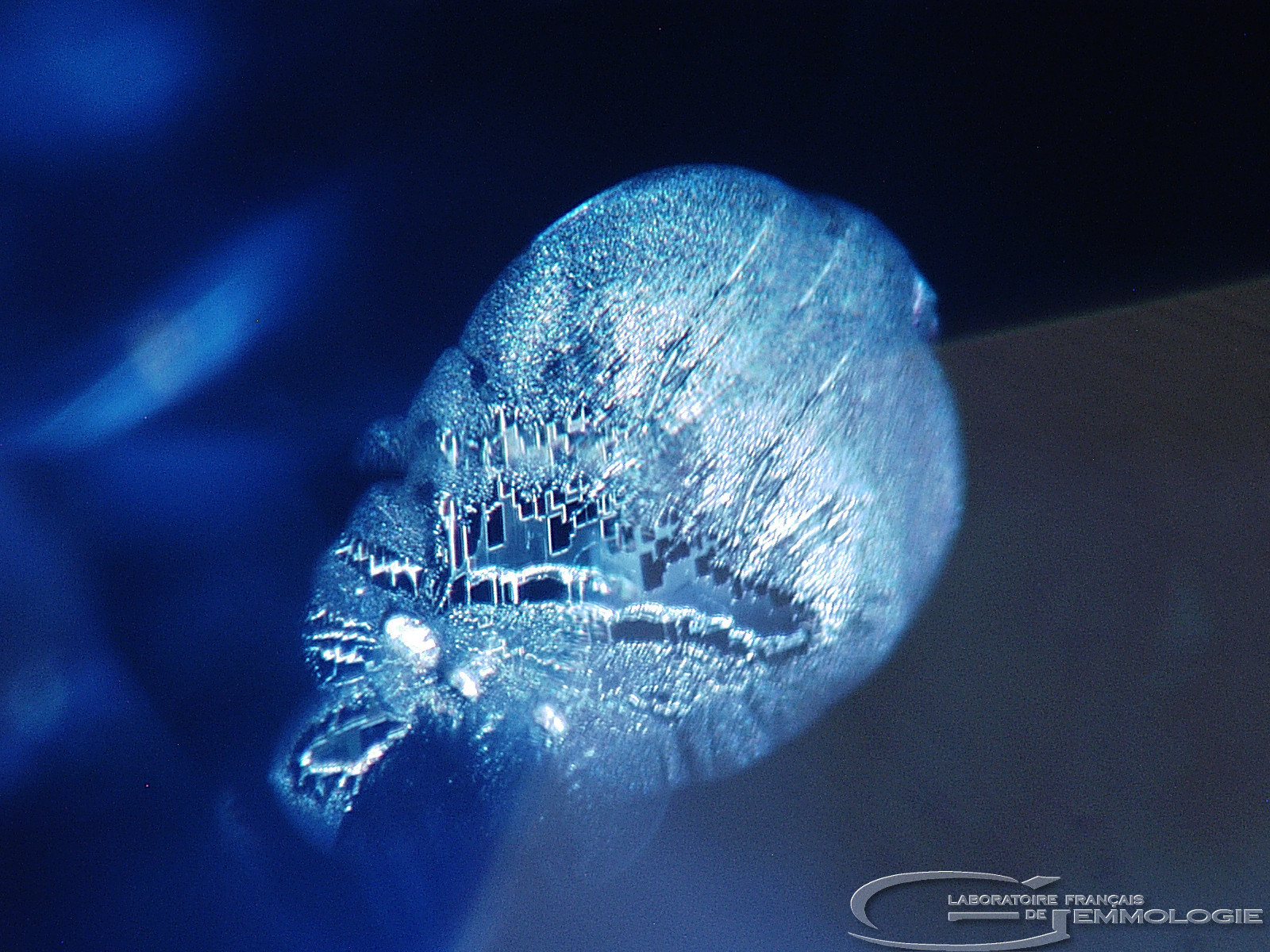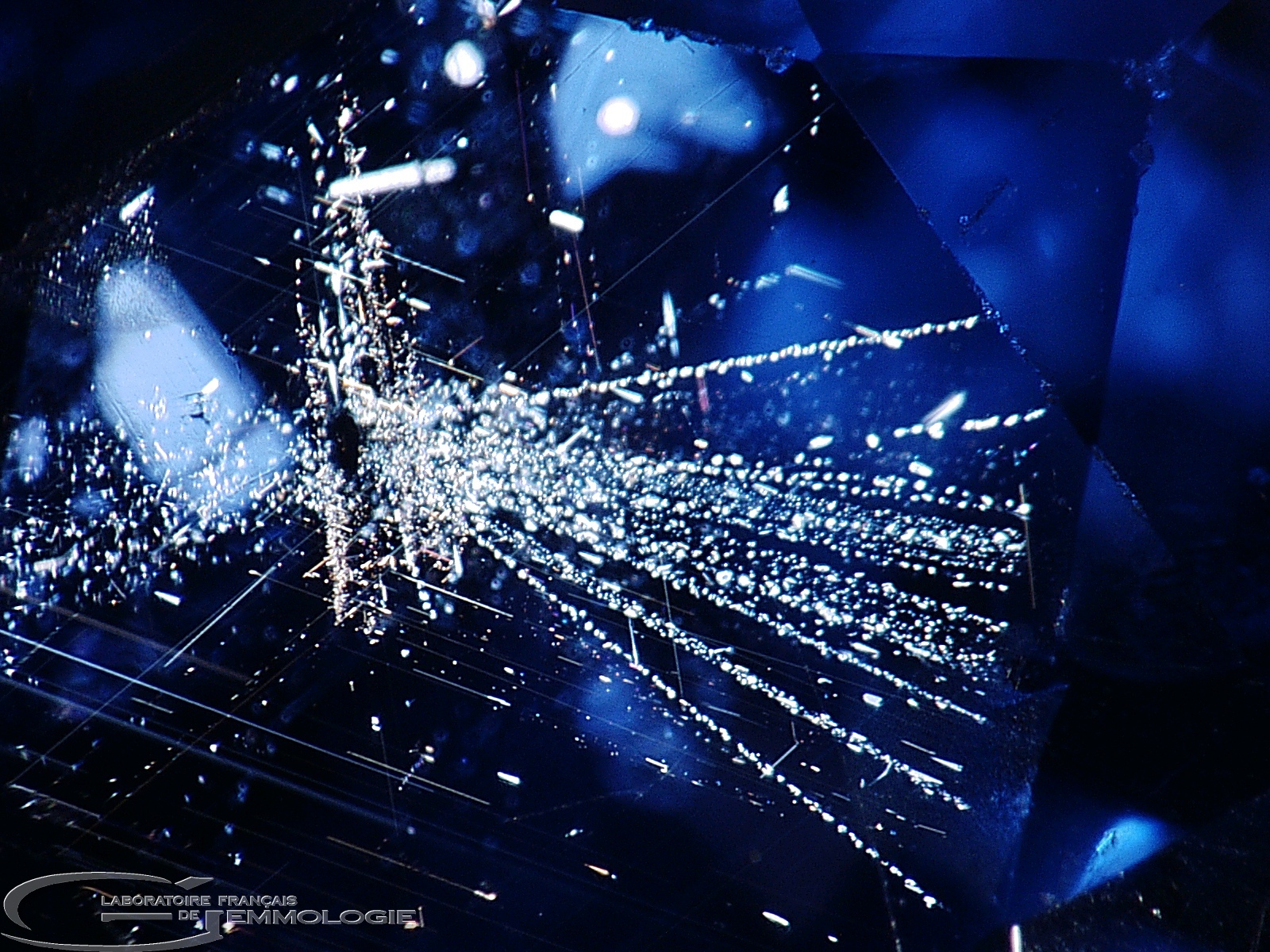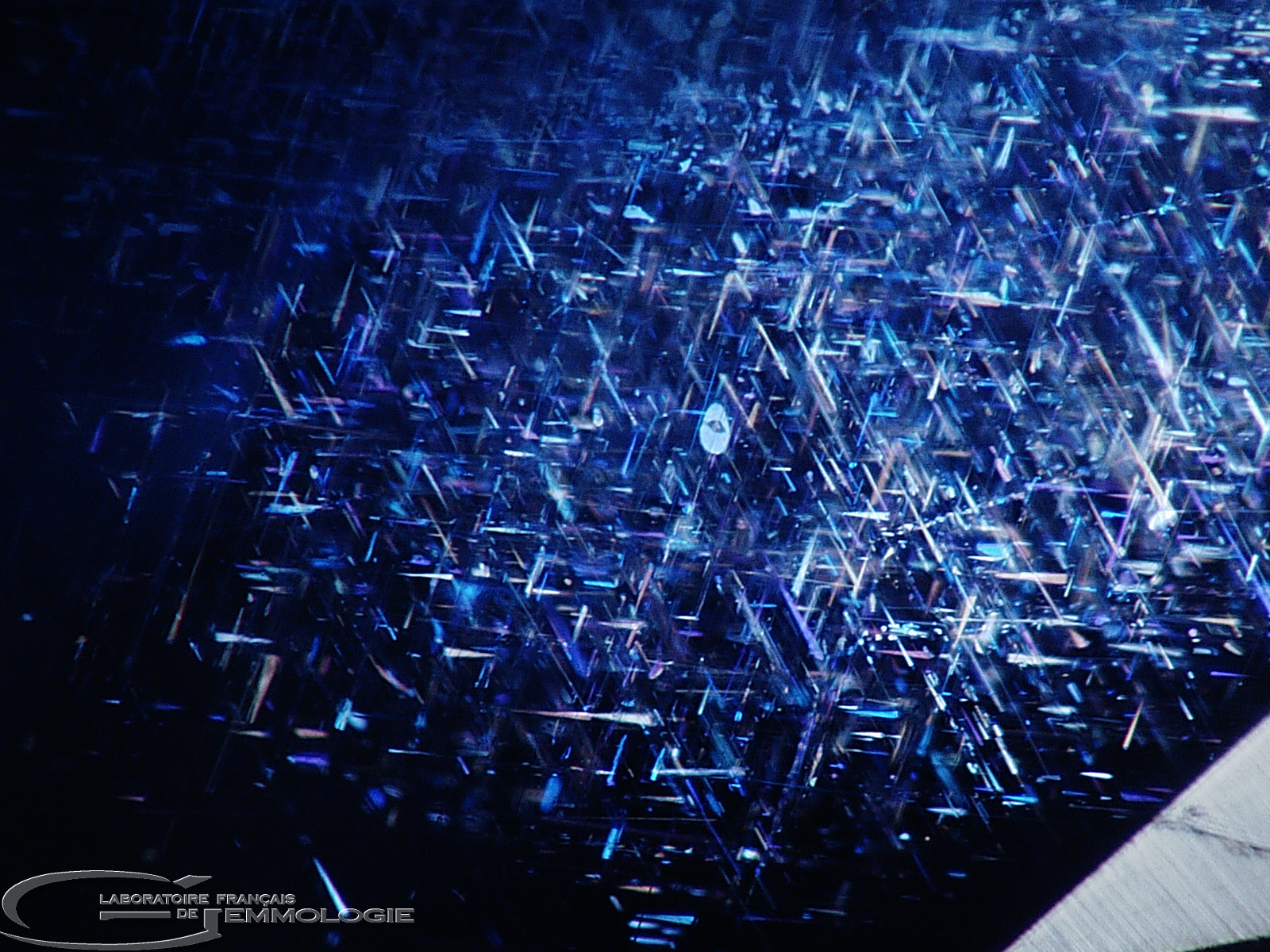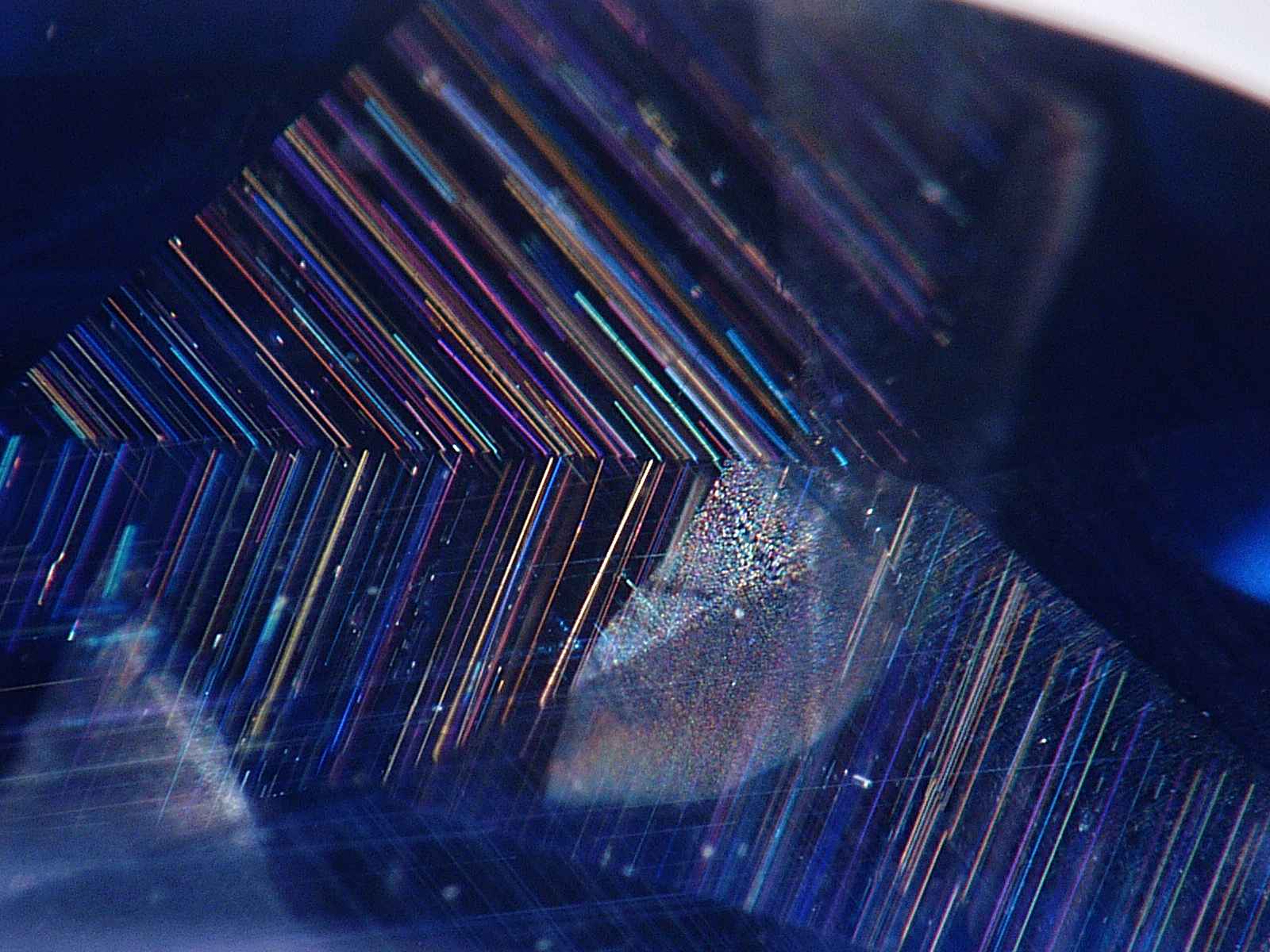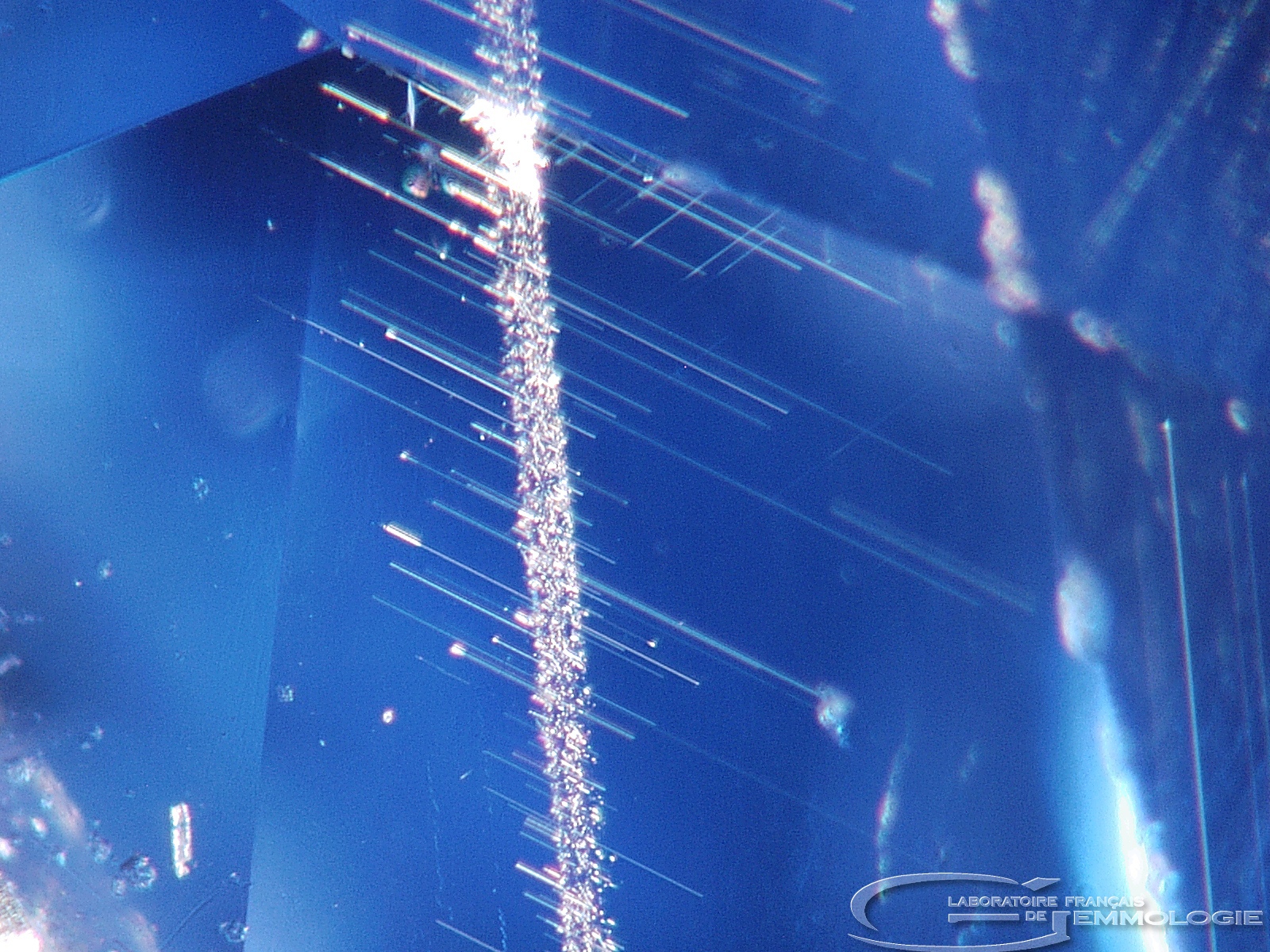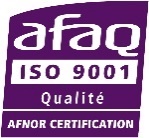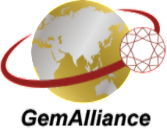GEMSTONE LIBRARY
SAPPHIRE
Sapphire is the blue variety of the corundum (aluminium oxide or alumina). It is coloured by iron and titanium. The formation of sapphires can be divided into several groups: sapphires of metamorphic origin, sapphires of metasomatic origin and sapphires of basaltic origin. Each type of sapphires will have different properties (spectrometry and chemistry in particular).
All sapphires submitted to the Laboratory are analysed to identify their nature. The synthetic sapphires that have existed since the end of the 19th century, it is essential to differentiate them from natural sapphires based on their inclusions, properties, and very different chemistry.
Thermal treatment of sapphires is a traditional practice detected in the laboratory by analysing inclusions and spectra acquired on each stone analysed. There exist other treatments for sapphires, including surface diffusion (titanium) or deep diffusion (beryllium), filling cracks with glass, possibly doped with lead or cobalt for colouring. Of course, all treatment on stones identified during our analyses is indicated in our reports.
The geographical origin of sapphires is determined based on a set of arguments deduced from our analyses: identification of inclusions, spectrometry, chemical study. The experience of our gem specialists and the resulting rigour of our quality procedures are undeniable strengths in the conclusions drawn on our reports.
CHARACTERISTICS
- Name: Sapphire
- Mineralogical nature: Corundum
- Colour: Blue (sometimes asterism or trapiche)
- Crystal system: Rhombohedral
- Chemical composition: Al2O3
- Causes of colour: Fe2+ – Ti4+ and Fe3+
- Density: 3.97 to 04:05
- Hardness: 9
- Cleavage: None
- Fracture: Conchoidal or irregular
- Optic sign: Negative uniaxial
- Refractive index: no: 1.767 to 1.778 / ne: 1.759 to 1.770
- Birefringence: 0.008 to 0.009
- Dispersion: 0.018
- Pleochroism: Clear, from blue to colourless or blue to blue-green
- UVL: Inert to orange, depending on which growth zones are richest in Cr3+
- UVC: Inert to orange depending on growth areas richer in Cr3+, milky with thermal treatment
- Treatments: Thermal treatment
- Surface distribution with Ti4+
- Deep diffusion with Be2+
- Filling with glass, possibly doped with non-Pb3+
- Syntheses: Merger (Verneuil process, Czochralski, etc.)
- Anhydrous dissolution
- Hydrothermal dissolution
- Geographical origin: Sri Lanka, Kashmir, Myanmar, Madagascar, Australia, Thailand/Cambodia, USA, Nigeria, Tanzania, Vietnam, etc.

